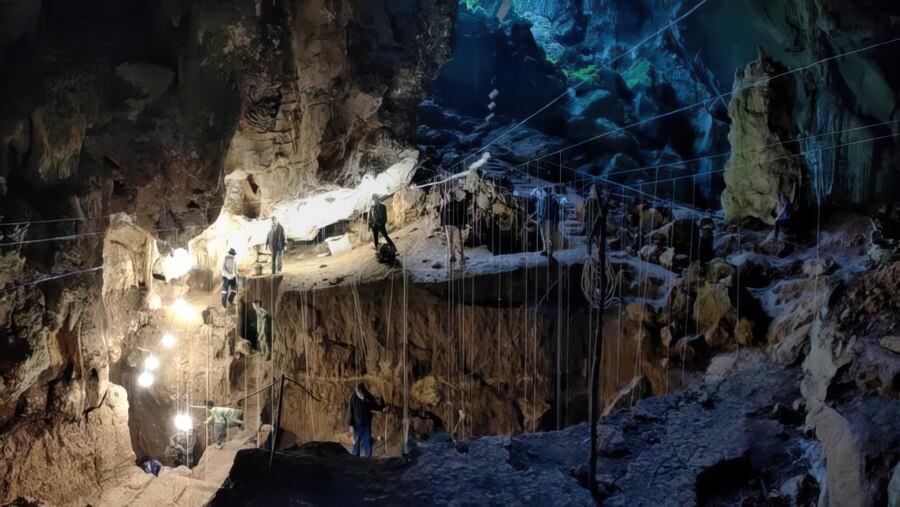Archaeological work in Tam Pa Ling cave in Laos reveals humans inhabited the area for at least 70,000 years. The discoveries include fragments of human skeletons and, intriguingly, physical characteristics that seem to reverse expectations about human evolution. The findings raise questions about early human migrations.
A 15-year-long archaeological dig in the Tam Pa Ling cave in northeastern Laos has uncovered evidence that humans lived in the area for at least 70,000 years, and possibly longer. The site contained layers of sediments and bones that were undisturbed for tens of thousands of years.
Laura Shackelford, an anthropology professor at the University of Illinois Urbana-Champaign who led the research with Fabrice Demeter, a professor of anthropology at the University of Copenhagen, said, “When we first started excavating the cave, we never expected to find humans in that region. But beginning that first season when we started work there, we found our first modern humans. At the time, that made them the only early modern human fossils in the region.”
The team’s initial excavations revealed bone fragments from modern human remains dating to about 40,000 years ago. However, as they dug deeper, they discovered older sediments and animal remains alongside human bones. The oldest human bone – a partial tibia – was found near the bottom of the trench, resting on bedrock about 23 feet below the surface. Analyses of nearby sediments suggest the soil was deposited there between 67,000 and 90,000 years ago.
“The entire section of the trench goes from about 30,000 years ago to 80,000 to 100,000 years ago,” Shackelford said. “Flood season after flood season, the sediments and bones washed into the cave and were deposited. They’ve been sitting there ever since.”
The researchers used optically stimulated luminescence, among other techniques, to date the sediments. This technique determines how much time has passed since the sediments were last exposed to light. Additionally, other methods were used to date soils, human, and animal bones and teeth found at various depths in the trench.
What puzzled the researchers was the physical characteristics of the fossils. Shackelford explained, “What we saw was that the youngest fossils, the first ones we found, looked old. And the oldest fossils that we found at the very bottom looked younger. It was the opposite of what we would expect to find because as you get deeper in time, you think of things becoming more archaic, more like ancestral populations.”
Shackelford proposed two explanations: either the older fossil was from an ancestral population with more modern characteristics, or the two skulls represented two distinct migrations into the region. “We don’t know how they’re related, but we have two very different looking groups of humans,” she said. “The older fossil was most likely part of an early migration – a failed migration because it did not give rise to people who are still alive today.”
The team could not extract viable DNA from the human remains due to the tropical environment. Shackelford stated, “I think the only way to settle our questions is with genetic data.” The researchers are preserving the human fossils in a freezer, hoping that future DNA extraction techniques will provide more insights.
The study is published in the journal Nature Communications and was supported by the National Geographic Society.


